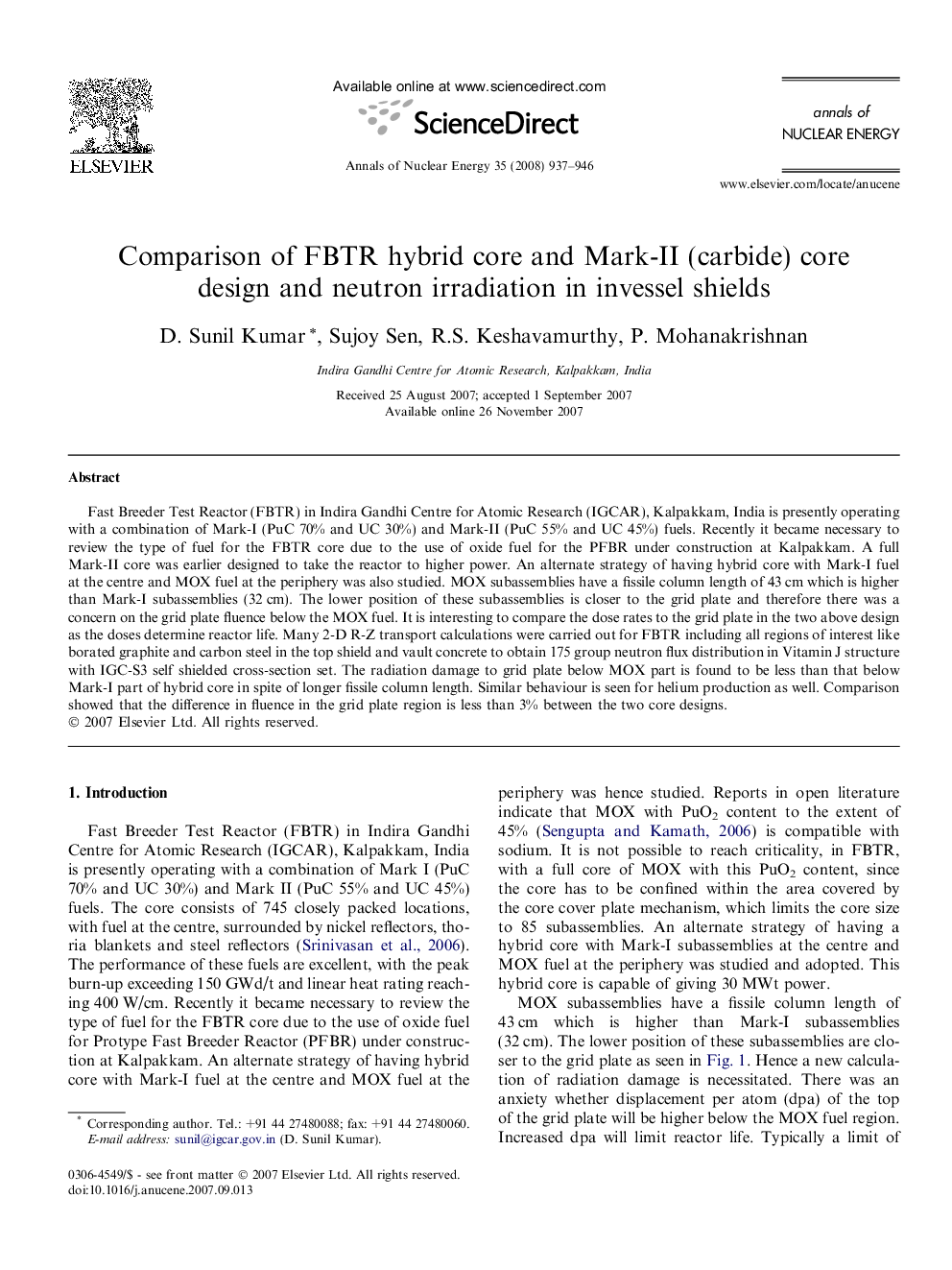| کد مقاله | کد نشریه | سال انتشار | مقاله انگلیسی | نسخه تمام متن |
|---|---|---|---|---|
| 1730182 | 1521200 | 2008 | 10 صفحه PDF | دانلود رایگان |

Fast Breeder Test Reactor (FBTR) in Indira Gandhi Centre for Atomic Research (IGCAR), Kalpakkam, India is presently operating with a combination of Mark-I (PuC 70% and UC 30%) and Mark-II (PuC 55% and UC 45%) fuels. Recently it became necessary to review the type of fuel for the FBTR core due to the use of oxide fuel for the PFBR under construction at Kalpakkam. A full Mark-II core was earlier designed to take the reactor to higher power. An alternate strategy of having hybrid core with Mark-I fuel at the centre and MOX fuel at the periphery was also studied. MOX subassemblies have a fissile column length of 43 cm which is higher than Mark-I subassemblies (32 cm). The lower position of these subassemblies is closer to the grid plate and therefore there was a concern on the grid plate fluence below the MOX fuel. It is interesting to compare the dose rates to the grid plate in the two above design as the doses determine reactor life. Many 2-D R-Z transport calculations were carried out for FBTR including all regions of interest like borated graphite and carbon steel in the top shield and vault concrete to obtain 175 group neutron flux distribution in Vitamin J structure with IGC-S3 self shielded cross-section set. The radiation damage to grid plate below MOX part is found to be less than that below Mark-I part of hybrid core in spite of longer fissile column length. Similar behaviour is seen for helium production as well. Comparison showed that the difference in fluence in the grid plate region is less than 3% between the two core designs.
Journal: Annals of Nuclear Energy - Volume 35, Issue 5, May 2008, Pages 937–946